Report to the Washington-based International Center for Journalists
When I arrived in Banda Aceh on April 6, 2005, Hotli Simandjuntak and Nani Afrida, two Banda Aceh-based journalists, unexpectedly picked me up at the Blang Bintang airport. They came to the airport not just to pick me up but also to bring me immediately to the newly-established Aceh Media Center. “We’re going to have a meeting with the USAID. I hope abang does not mind joining our meeting,” Nani said. “Abang” is an Acehnese word which literary means “big brother.”
Nani currently freelances for The Jakarta Post daily and takes photos for the Frankfurt-based European Photo Agency. She is an Acehnese, who is indeed a Muslim, while her boyfriend, Hotli, is a Christian Batak who freelances for TV7 in Jakarta. Nani is also the secretary of the Alliance of Independent Journalists (AJI) in Banda Aceh.
This union set up the Media Center to help freelancers to have a working space. The plan was drafted three years prior to the Dec. 26, 2004 tsunami. But it was only established on March 23, 2005 with a major funding from the German agency Friedrich Evert Stiftung.
When we reached the office on Jalan Merak, it was still empty. Hotli unlocked the door. Nani showed me around the two-story building. It is a relatively spacious office. It has two rooms on the ground floor and three on the second. It has five PCs, one laptop, a television set, one air conditioner and furniture.
“We could gather here but we don’t have the internet yet,” Nani said.
Zainal Arifin Nur, a reporter for the Banda Aceh-based Serambi Indonesia daily, who manages the day-to-day operation of the office, arrived and joined us. Nani said when most international journalists were still in Aceh, most UN officials and representatives of the Ausaid, the USAID and other international agencies, held their media meetings in a UN compound that also provides internet connection. But now most international journalists have left Aceh. They left local journalists like to them to cover the stories. “When we opened this Center, we invited them to come. Unexpectedly they all came here,” said Nani.
“We agreed that we need to know each other better. The UNDP officials, who came here, said they need to contact local journalists to inform the public about their works,” Nani said.
Hotli added that the UNDP people did not realize the works of the local journalists until the establishment of the Media Center. “Many of us work for international media organizations,” Hotli added. He himself used to work for Agence France Presse. Other journalists work for Reuters, Associated Press as well as Indonesian newspapers in Medan and Jakarta.
USAID Meeting
In the afternoon, journalists began to trickle into the Media Center. Nani introduced me to all of them. AJI has 18 members in Banda Aceh –about 10 percent of the journalists population.
Novalina Kusdarman and Restu Prathiwi of the USAID Jakarta also arrived. I know them since the 1990s in Jakarta. Novi is in charge of the USAID media program. Restu currently works with Development Alternatives Inc. –a USAID contractor in Banda Aceh. USAID is one of the biggest donor agencies in Aceh. The purpose of the visit, Novi said, is to get to know AJI people as well as to get input what the USAID could do in helping them. She said that she is based in Jakarta but Restu is in Banda Aceh.
Nurdin Hasan, the president of AJI Banda Aceh, began the introduction. He said before the tsunami, Banda Aceh had 11 radio stations. Now it has five stations. It still has one television station, the state-owned TVRI Banda Aceh, which is now airing local program 1.5 hours per day. It used to have 2 hours programming.
The number of newspapers interestingly increased. Now Aceh has two dailies: Serambi and Rakyat Aceh, respectively owned by media giants, Kompas Gramedia Group (Jakarta) and Jawa Pos Group (Surabaya). Aceh also has some weeklies: Modus tabloid as well as the “irregular” Media NAD and Warna entertainment tabloid. “They are not serious newspapers. Sometimes they publish, sometimes they don’t,” said Nurdin. Outside Banda Aceh, people only have radios, at least one in every district.
Nurdin said the idea to set up the Media Center appeared about three years ago when the Free Acheh Movement (GAM) and the Indonesian government under President Abdurrahman Wahid had agreed to have a ceasefire. “It was important to have a place where journalists and the conflicting sides could communicate openly,” said Nurdin. Journalists were then routinely pressured to publish press releases either by the GAM guerillas or by the Indonesian military.
But the plan was cancelled when President Megawati Sukarnoputri, who succeeded Wahid, declared martial law in Aceh on May 19, 2003. Jakarta mobilized more than 20,000 troops to hunt down the Aceh guerillas, who were then estimated at 8,000. The Indonesian military banned newspapers from quoting GAM courses. Aceh media also imposed self-censorship. Newspaper circulation dropped. But suddenly the tsunami hit the western coast of Aceh on December 26, 2004. It killed more than 125,000 Acehnese and internationalized the Acehnese cause.
International journalists, who were barred entering Aceh since the 1980s, were freed to visit the territory. International correspondents moved quickly to cover the tsunami. Nurdin and his colleagues decided to open up that plan once again.
“What do the journalists need?” asked Novi.
Mohd. Hamzah, the correspondent for the Jakarta-based Suara Pembaruan daily, said that one month after the tsunami most journalists could not write. “The tragedy consumed us psychologically. International and Indonesian journalists arrived, did cover stories and did write. We could not write,” Hamzah said.
“Journalists lost their computers, cameras and even clothes. In the second month, we began to be able to work again,” said Hamzah.
“Our difficulties are now English. Most of the international bodies speak in English and released their statements in English. Is it possible to organize an English course, for instance, in America for a month?”
Everybody laughed. Novi said she would take notes.
Hamzah complained about media organizations that do not bother to help their Aceh correspondents. “I don’t have a place to live. I cannot afford to rent a house until now,” Hamzah said.
Nani Afrida added that English is a major obstacle in Banda Aceh now. Many international bodies are taking over works from both the Aceh and the Indonesian governments, making English the working language among various organizations in reconstructing Aceh. It has been isolated so long that it is a rare to meet an Acehnese journalist who is able to write in English. Nani herself writes her stories in Indonesian.
Arief Rahman, the correspondent of the Medan-based Analisa daily, stressed that the most important thing for journalists is their working tools. “It is difficult to get tape recorders, computers, in Aceh. How could you work?”
Said Kamaruzzaman of Serambi said he had only bought his hand phone a month ago. “My motorcycle was also lost in the tsunami,” he added.
The discussion became lively, going around about equipments, English courses and psychological healing process. Some questioned whether it is possible to have an English course outside Aceh such as Bali or Australia. Others complained about rising prices of houses. Half of the houses in Banda Aceh were destroyed by the waves. Property values rose sky high. I also knew that the Brussels-based International Federation of Journalists had worked with AJI to distribute US$ 53.000 among AJI members victimized by the tsunami. But I assumed the process was still going on.
Serambi Indonesia
My next appointment was to meet Mohammad Dim, the business manager of Serambi in his temporary office in Banda Aceh.
“Abang Dim” is one of the most popular editors at Serambi. He used to be an editor of Kontras tabloid, weekly supplement of Serambi. The tsunami killed many Kontras journalists and closed the tabloid too. Dim is humble, low key and as long as I know, never got involved with politicians –a bad habit among many journalists in this part of the world.
“I took over this job because our business manager was killed in the tsunami,” he told me.
Serambi became popular after 1998 when Suharto was deposed by the pro-democracy movement. Serambi broke free from the customary self-censorship and began to report freely on the Aceh independent movement. Its circulation soared.
In 2003, President Megawati declared the martial law. The Indonesian army demanded that Serambi's editors stop giving a voice to the rebels. Coordinating Minister on Security Susilo Bambang Yudhoyono headed a task force on the martial law. He later succeeded his boss to become Indonesia’s current president. Serambi was threatened with closure.
Late last year, it was feared that the tsunami might achieve what the publications' enemies had always wanted: to close them down. If Serambi could not recover, it would have been a serious blow to free speech in Aceh.
The newspaper's two-story building, about a kilometer from the sea, was devastated. The water demolished Serambi print shop and carried away all three $450,000, 5-ton German printing presses. Nearly a third of Serambi's staff was killed. The waves swept away eleven of 38 reporters and five of 13 editors. Overall, more than 50 of the 180 people who worked for Serambi are gone.
Publisher Sjamsul Kahar, Dim and their colleagues, however, wanted to get the paper going again as soon as possible. On January 1, just six days after the disaster, Serambi Indonesia was back in circulation, albeit on a drastically reduced scale. It was printed in its second print shop in Lhokseumawe, the second city in Aceh.
At first, Serambi was handed out for free, just to let readers know it was still around. Now, it's available for 1,500 Indonesian rupiahs (about 17 cents) — a 500-rupiah discount from the pre-tsunami price.
In the pre-tsunami days, it printed 22,000 copies in Banda Aceh and 12,000 in Lhokseumawe. According to Dim, it is now printing 22-23,000 copies a day in Lhokseumawe, the second city in Aceh.
Dim already knew about the ICFJ from the email correspondences between Rob Taylor of the ICFJ and the Serambi newsroom. When I asked Dim what the ICFJ could do to help his works, he told me, “Training the staff.”
“In the newsroom, what we need is a training on writing, ethics and the philosophy in journalism. Layout is also poor. In the business side, we need a training on marketing the ad spaces and newspaper circulation. Promotion is also weak.”
“The training is very urgent! I myself have no business background,” Dim said.
I asked him when he expect the business training to be organized.
“The sooner is the better. We really need the business training. So that we could implement it as soon as possible.”
Dim mentioned some crucial issues i.e. circulation, service marketing, ad marketing, general marketing, aptitude in marketing.
“Where should we do it? We cannot do it in your (small) office indeed?”
“In Banda Aceh, we have some hotels like Hotel Sulthan, Hotel Cakra Donya or Wisma Daka. They have clean water, telephone, but you need to check them yourself,” he said, adding that if the ICFJ could hold a training in Banda Aceh, he could send five marketing and five circulation personnel to join in the training program (I checked the three hotels. Hotel Sulthan is the only one that has meeting rooms. Please click my blog to see some pictures of the hotel: http://andreasharsono.blogspot.com/2005/04/banda-aceh-training-facilities_09.html)
I asked Dim about the editorial training. He said it is also imperative as it is also high time to elevate the standards of Serambi. But he recommended me to talk to his boss, Sjamsul Kahar, to discuss more about the editorial training. “I believe that we could sell the newspaper better if the editorial content is also better.”
So he arranged a meeting with Sjamsul Kahar.
We chatted for a while. I asked him about the arrival of the Jawa Pos Group in Aceh with Rakyat Aceh daily. Dim said he welcomes the new daily as it helps Serambi to have a competitor.
“Pak Sjamsul” or “Mister Sjamsul” is a burly man with a Stalin-styled moustache. I met him in another office of Serambi –also another temporary office in Banda Aceh. It is crowded. It was full of cigarette smokes. The newsroom has only five PCs. The design room is much more crowded. I used to visit the pre-tsunami Serambi office. It is sad to see them working in dilapidated office like this.
Sjamsul told me he has two priorities right now. The first is to rebuild the print shop scheduled to be installed in May and the office by June. “Thanks God, we still have the trust of the banks. They would like to give me loans to build our office,” he said, adding that the loan is very likely to come from the Banda Aceh-based BPD bank.
He will also use a bank loan to get his press machine although the French government had promised it might help with an engine from a Paris newspaper. His corporate office, Kompas Gramedia Group, in Jakarta also is to provide financial assistance to rebuild Serambi.
The second is to build Serambi’s human resources. He said the training should not only recover the newspaper editorial content but also to get outside help to make it a better newspaper.
“We need something new, something fresh, we need a comparison.”
“I have read Bill Kovach’s book. I think independence is the answer to our journalism. Over the last three decades, our press is a crabby journalism. But we could understand that habit when editors and journalists have to associate themselves with those with power. The purpose is to survive,” Sjamsul said.
(I am indeed pleased to hear Sjamsul mentioning Bill Kovach. I helped translate and publish Kovach and Tom Rosenstiel’s The Elements of Journalism into Indonesian in 2003)
Sjamsul already knew the ICFJ and told me about his correspondence with Rob Taylor. He told me to tell the ICFJ to organize an in-house training for Serambi editors and reporters. “I will join that course too,” he said.
He stressed that he wants his journalists to be “brainwashed” (he used the word in English) from the remains of the New Order censorship.
But Sjamsul also recognized the needs to have a longer workshop on reporting and writing skills. Just like Mohammad Dim, Sjamsul told me to do it outside Banda Aceh, but not too far from Banda Aceh, so that the participants could focus on their learning.
His choice is Sabang, a small town on Weh Island. “If you could provide ten seats for Serambi, I will send five old time employees and five new recruits,” he said. I agree with them and disagree with some other Banda Aceh journalists who recommend me to do it outside Aceh i.e. Bali, Jakarta or even Berastagi in North Sumatra. They are too costly.
He also suggested the ICFJ to send a newspaper designer to train Serambi art people, saying that he does not mind to share the training class with other newspapers (A Serambi designer told me they used PageMaker Version 8 and Photoshop Version 7). “Practically, it will be good if I could finish the reconstruction of the office and the recruitment. Our contractor said it will be finalized in June but there are already some delays. I expect the office to be completed in July. So we could do the training in August.”
Warna tabloid and TVRI I also met Suhadri Syalnas, the head of TVRI Banda Aceh, in his office in the Mata’ie area. Suhadri is a Minang, an ethnic group who originates from western Sumatra. He used to work in Banda Aceh for six years prior to an assignment in Jakarta. He showed me the vast compounds of TVRI. Hundreds of refugees built their camps in the compound.
“The structure of the main building already cracked. I built a temporary studio in the transmission building,” Suhadri said.
Some Japanese engineers have analyzed the building structure and recommended him to evacuate the building. It might collapse with another temblor. Earthquakes occur almost every other day in Aceh after the Dec. 26 temblor at 9.0 Richter scale that created the massive tsunami.
He said TVRI used to have 31 transmission towers throughout Aceh but 10 went off with the tsunami. I asked him which organizations had helped TVRI. He said Internews had donated a computer for writing running text. An Internews trainer also came to Banda Aceh to train TVRI producers using that computer. Tomi Satryatomo, a Trans TV producer in Jakarta, also work in the TVRI office on 10-24 April.
I asked him what the ICFJ could do. He said an in-house training on news production and video editing would help. Everyday TVRI produces 1.5 hours of programming. Their ends at 5 pm. “We could start the training after that,” said Suhadri. He reminded me to avoid organizing training program in October due to the Ramadan fasting month. “It is better to do it in August or September.”
TVRI has 233 staff and only around 20 are journalists and cameramen. Satryatomo, however, sent me an email, saying that he is frustrated to know how TVRI journalists work. They usually cover stories based on “envelopes” and government invitations.
I also arranged a meeting with the now defunct Warna tabloid. I met Ridwan Mukhtar, its managing editor, and Mahfudz, its business manager, in a shop house in the busy Darussalam neighborhood in Banda Aceh.
They showed me the two issues that they used to publish last year. Warna was first published in August 2004. Its second edition came out in October 2004. It did not appear again until the tsunami hit Aceh in December. It submitted a $250,000 proposal to the ICFJ to help republish the “entertainment tabloid.”
Ridwan said it is an entertainment tabloid with photos of artists and “many other talented Aceh artists.” He also said that Aceh need to be a cultural revival. He also criticized “mainstream media” like Serambi, Acehkita magazine or Rakyat Timor, saying that they rarely publish “positive reports” about Aceh’s cultural life. He said Warna has got many contributors throughout Aceh.
He said he wants the new Warna to be distributed freely among Aceh refugees in their camps.
“What’s more important for the refugees: an entertainment tabloid or a newspaper with information about their daily supplies or government policies?”
“Warna will provide those information as well,” Ridwan answered.
“Is it an entertainment tabloid or a refugee newspaper?”
“It is a newspaper for the refugees,” said Ridwan.
I also asked them the budget of $250,000. Isn’t not too big? Mahfudz frankly told me that the budget was too expensive. He had questioned his friends whether it was wise to submit such a huge budget to the ICFJ when their real need is much smaller.
I got the impression that these two young men were enthusiastic about their cause but they were confused about how to do it. I agree that the Acehnese cultural values should be strengthened. I agree that entertainment is important for the Acehnese. I think everyone agree that the refugees do need information. But we need to have a clear plan to pursue those agendas. I think it is better to give Ridwan a chance to participate in a journalist training or Mahfudz in a business workshop. Who knows it might help them when the timing, the planning and their capital are enough to republish their tabloid?
CoHA coffee shop A must-visit place for visiting journalists in Aceh is a coffee shop in the Simpang Lima area in downtown Banda Aceh. This shop has no name. It is simply a large wooden table behind a coffee shop whose owner serve coffee and snacks. But it is the place where most Aceh working journalists spend their time, chatting and exchanging information. I even saw a small trade about “card reader” to transfer photo files.
They called it the “CoHA” coffee shop. “CoHA” is the acronym of the "Cessation of Hostilities Agreement" --the ceasefire arrangement on Aceh promoted by the Geneva-based Henry Dunant Center in 2002. Aceh journalists altered it into “kongkow-kongkow haha-haha.” Kongkow is a Hokkian-derived word which literary means “chatting.” Haha is indeed laughing. It is a coffee shop for chatting and laughing.
I went there on April 8, 2005, to meet scores of journalists and to test my initial finding. I also met Tarmizy Harva, a photojournalist stringing for Reuters. Tarmizy won the honorable mention by the World Press Photo in 2003. I also met journalists working for the newly-published Rakyat Timor.
I asked Tarmizy if there is anything that an international organization like the ICFJ could do in Aceh. He laughed, “Could we dream of having James Nacthwey leads a photo workshop in Aceh?”
I said I would bring this to Rob Taylor in Washington DC. Who knows Nacthwey would like to spend his time in Banda Aceh?
Or else, Tarmizy said, we could invite Oscar Motuloh or Arbain Rambey, the photojournalists in Jakarta, to hold a workshop in Banda Aceh.
Hotli Simandjuntak reminded me if the Media Center could get a complete collection of the now defunct Pantau magazine (25 issues). I used to edit this media magazine. Most Aceh journalists received this magazine thanks to Exxon Mobil, an American company which runs the Arun gas reserve in Lhokseumawe. It paid the subscription of the magazine in Aceh for the whole two years it existed between 2001 and 2003.
Asnawi Kumar of Rakyat Aceh responded to the idea to organize a workshop in Sabang, “Human resources is a huge problem in Aceh.” He said it is a good idea to hold a workshop outside Banda Aceh but not too far from the capital. “Sabang is a good choice,” he said. I told him I have visited Sabang and looked at Sabang Hill Hotel. “It is a quiet place to isolate the journalists,” he smiled.
Asnawi is Rakyat Aceh’s most senior journalist. He used to edit Atjeh Ekspres daily in 1999. It became a fierce competition to Serambi in those post-Suharto days. GAM considered Atjeh Ekspres to be friendly with the guerillas. It made the newspaper the gatekeeper to its independence celebration held on Dec. 4, 2000 in Sigli area in the hinterland of Aceh. Its circulation rose to 23,500 copies when it faced a cash problem. Its owner was a social foundation led by Z.A. Maulani, a former head of the State Intelligent Agency –the Indonesian equivalent of the CIA! The foundation did not help the newspaper. It went bankrupt.
He met Dahlan Iskan, the CEO of Jawa Pos Group, when Dahlan was visiting Banda Aceh on Jan. 12, 2005. Dahlan decided to publish a newspaper in Aceh to compete with Serambi while it was still struggling with the destruction. The paper was printed in a Jawa Pos print shop in Medan. The name is Rakyat Aceh. But it does not have an office yet. Asnawi and other Rakyat Aceh journalists worked in Banda Aceh, typing in wherever places that could provide free computers and free internet for them and sending the stories to Medan at 6 p.m.
I asked him how to select the participants of the workshop. He said it should be open through a selection process. The best way is to ask the would-be participants to write an essay and to submit a story that they had written. The criteria should also include integrity. “I would like to see women being prioritized. At least five seats should be allocated for women,” Asnawi said, adding that most journalists in Aceh are men. I took some photos in Banda Aceh and uploaded them in my blog: http://andreasharsono.blogspot.com/2005/04/banda-aceh-journalists.html
Recommendations My recommendation is to do the in-house courses on design and journalism in the new office of Serambi. It means we could wait until August or September. The design course is opened to non-Serambi journalists. They did not mention any name but I guess they expect an American designer to conduct the workshop.
But the journalism course is designed only for Serambi journalists and editors (Sjamsul Kahar is included). We could arrange the course every day in the slowest hours of the day. Maybe one week is enough.
But the workshop on business and circulation are more urgent. So I suggest we do it at Hotel Sultan in Banda Aceh. Mohd. Dim stressed the needs to do the business workshop as quick as possible. The participants need not to sleep in the hotel.
But we need to organize a more serious workshop, a longer one, to be organized openly in Sabang. The selection should be opened. I have two Sabang journalists who are eager to help the logistical aspect of the training in Sabang. I expect Nani Afrida and Hotli Simandjuntak to help with organizing the Banda Aceh courses but I realized later that they are very busy with their jobs. Another possibility is to ask Chik Rini and Raihan Lubis, two other Banda Aceh journalists, to help prepare the training there.
Translators are needed in all of those workshops unless we could get trainers who speak Malay or Indonesian. Chik Rini suggested we find an English student at the Syiah Kuala University to be the translator.
I checked some hotels both in Banda Aceh and Sabang. I think Hotel Sulthan and Sabang Hill Hotel are the best options that we have. They are not pricey but we need to do the booking early. I prepared a review of the Sabang hotel in my blog: http://andreasharsono.blogspot.com/2005/04/sabang-training-facilities_08.html
I think it is better to let the Internews do the television training just like what they do with radios. The ICFJ could focus its work on print journalism. The works here are pretty huge. If we could help Serambi to recover their human resources, there will always other works to do to elevate their quality. I would like to see the ICFJ open its works with these training programs but it will move futher with future commitments.
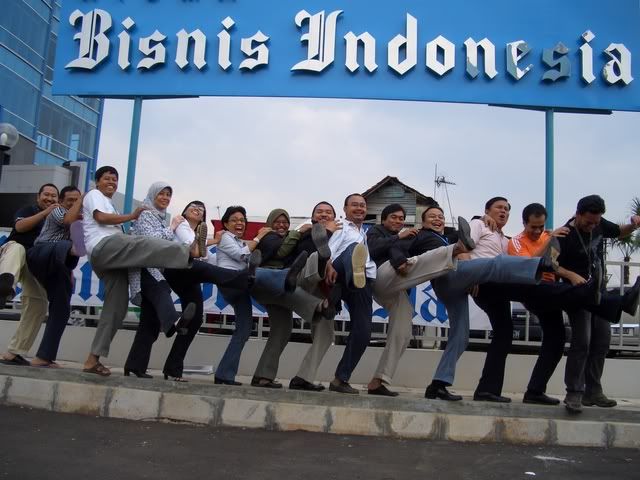 .
.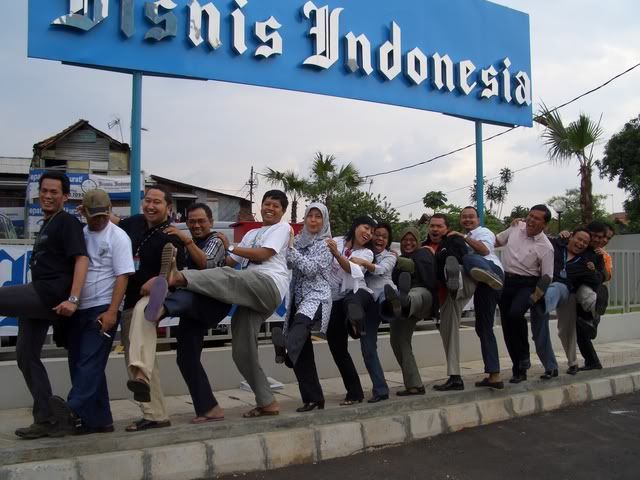 .
.


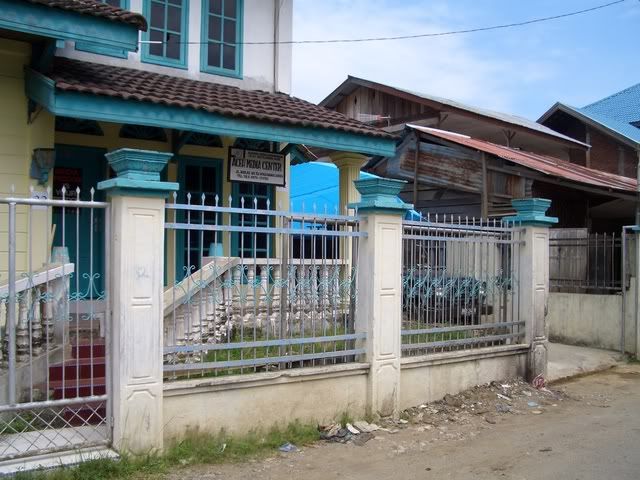 .
.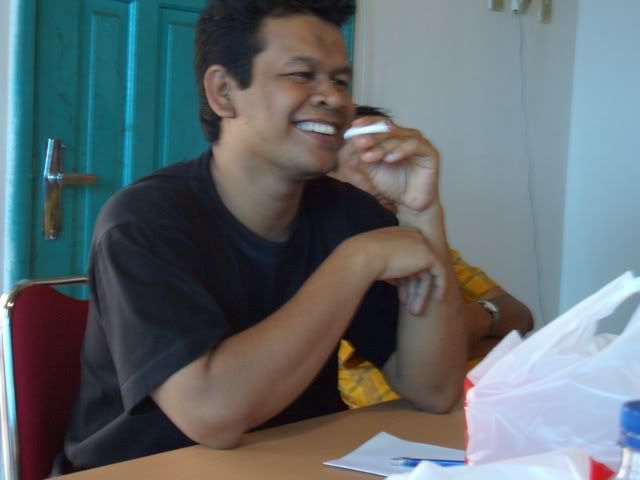 .
.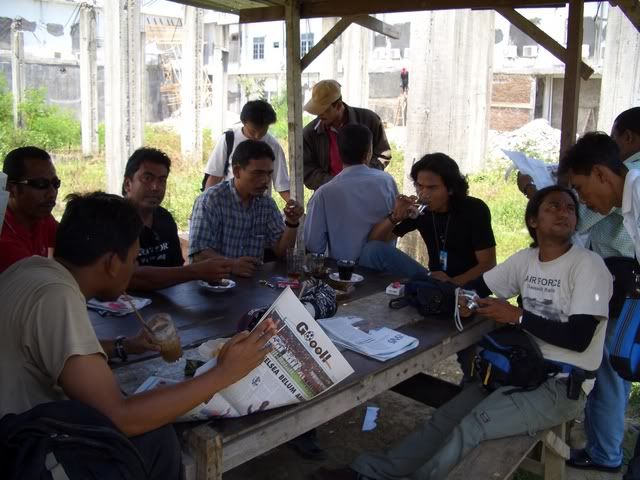 .
.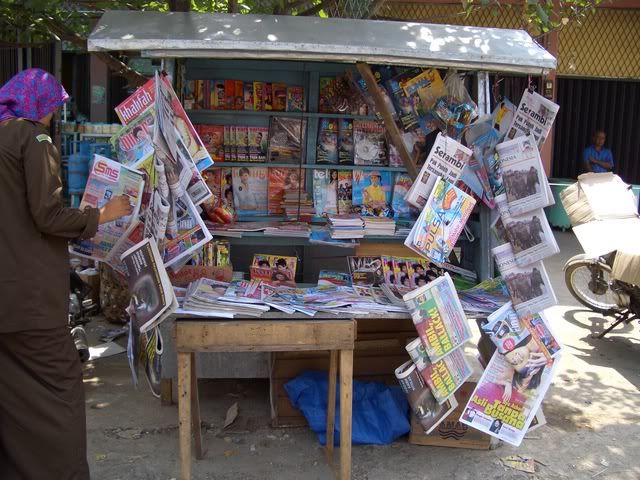
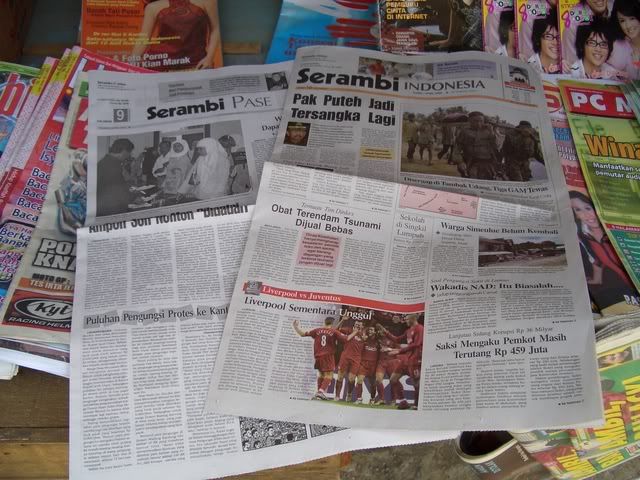
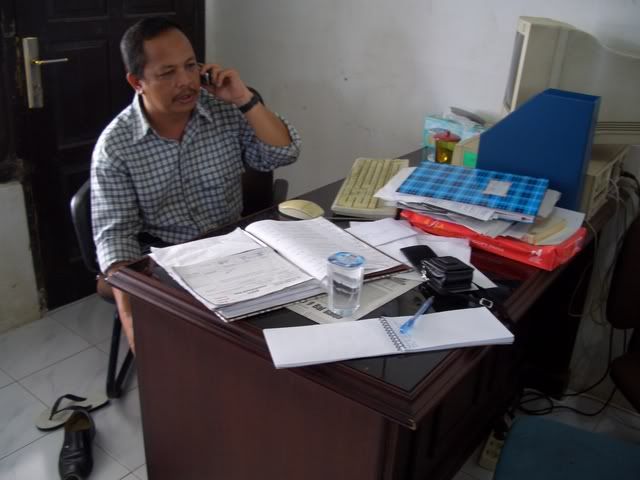 .
. .
.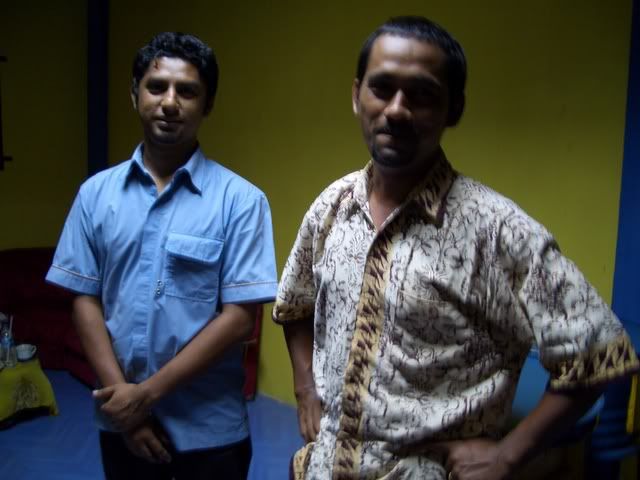 .
.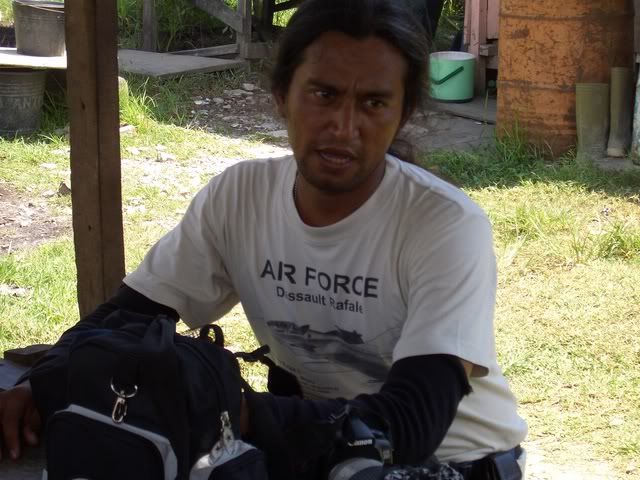 .
. .
.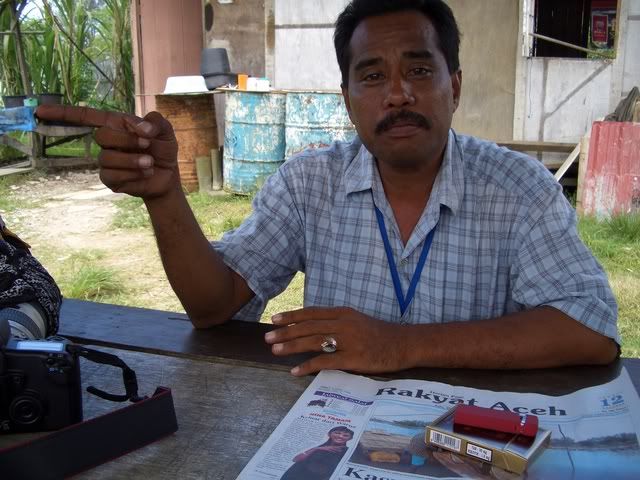 .
.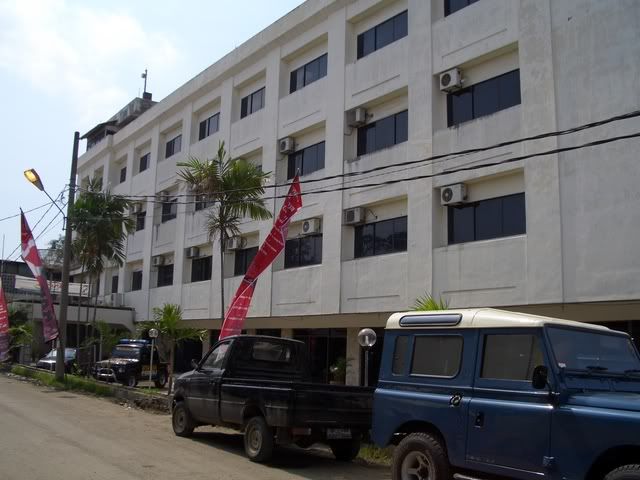 .
. .
.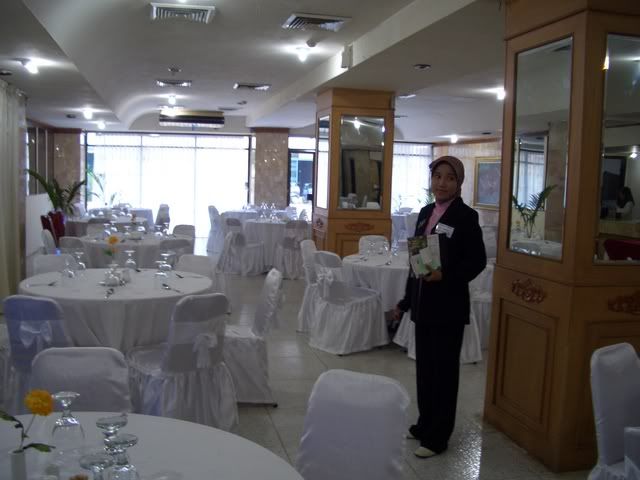 .
.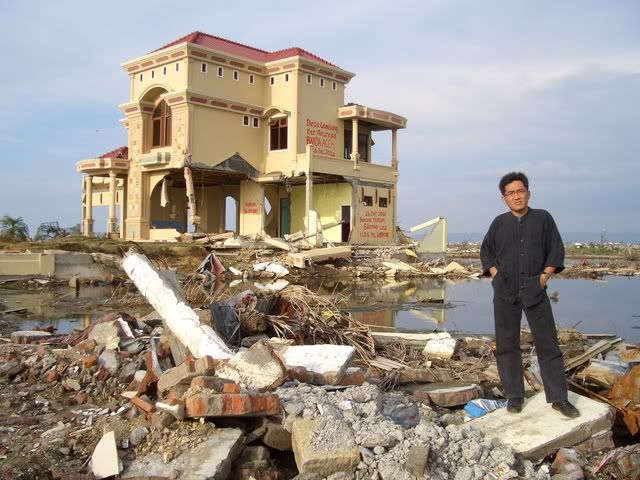 .
.






